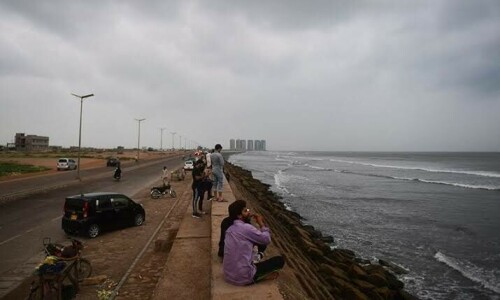ISLAMABAD: The Asian Development Bank (ADB) has stressed the need for a new urbanisation mode for Pakistan as failing public services, declining quality of life, and decreasing economic productivity undermine urban agglomeration’s economic and social benefits.
The Manila-based lender’s report, ‘Pakistan National Urban Assessment: Pivoting towards Sustainable Urbanisation’, released on Wednesday, points out that the current urban development model perpetuates these challenges and needs to be replaced by a sustainable urbanisation model.
This new urbanisation model should seek to internalise the economic, environmental and social benefits associated with higher levels of agglomeration; be fuelled by robust planning and evaluation capacities that extend vertically and horizontally, as well as spatially and temporally; and be steered by proactive institutions that underwrite the social and economic well-being of urban citizens with the public services and infrastructure necessary to sustain growth without detrimental social and environmental consequences, suggests the report.
According to the report, forward-looking urban planning needs to integrate solutions to the known challenges of urbanisation, which requires a multi-sectoral planning approach that fosters the allocation of land, capital and labour across conventional boundaries to maximise the social, environmental and economic returns for all.
It also requires the progressive reinterpretation of urban spaces to reduce the negative externalities of one sector on another, such as housing, energy, transport, water, health, education, recreation, social services, and environment. Such a holistic planning approach will enable cities to develop synergies and complementarities across sectors to capture the most benefits for all.
The report says the appropriate deployment of urban units with multi-sectoral technical competency can continue to facilitate this shift to an integrated urban planning approach.
It further suggests that urban planning should channel the increasing value of land toward providing public services. Coupled with efforts to distribute service costs to beneficiaries through user fees, increasing public revenues from urban land development should lead to the continued enhancement and expansion of services and incremental increase in revenue sources.
Linking service liabilities to the investments made by urban service providers and mandating social and environmental provisions in property developments should gradually ease ongoing budget pressures on local governments.
Land allocations and development approvals need to be progressively redefined to enable public infrastructure to guide planned urbanisation rather than chase messy urbanisation. This can build on existing Local Government Act (LGA) provisions, empowering local governments to approve land use plans and exercise control over development proposals.
Provincial governments must bridge the gap between local government acts and their implementation. The various provincial local government acts (LGAs) have mandated the transfer of responsibility for municipal service provision to local governments while retaining the responsibility of policy-making with provincial governments. To date, provinces have made little progress in relinquishing control over the funds or the functionaries that deliver municipal services in urban areas.
The ADB report says overarching land use and master planning frameworks in Pakistan should prioritise increased vertical mixed-use developments and pedestrian-friendly urban areas. They should foster the creation of public and community spaces while also accommodating a broad range of commercial, cultural, environmental, and educational urban activities.
They should also incentivise investments in high-rise, inner-city regeneration projects or the vertical redevelopment of informal settlements, reinforced with policies for property developers to invest in affordable housing, energy efficiency, and green spaces.
Housing in cities has not kept pace with rapid urban population growth, while the average annual supply of 150,000 new urban housing units falls well short of the demand for 350,000 new housing units per year. This deficit of nearly 10 million housing units in 2018 has led to 57 per cent of urban residents living in informal settlements.
The typically overcrowded and squalid conditions for those in informal settlements contrast sharply with those in the new, single-family housing schemes in suburban areas and the exclusive, gated communities in the city centres.
Published in Dawn, August 15th, 2024















































Dear visitor, the comments section is undergoing an overhaul and will return soon.